At the entrance to Victoria and Albert Museum’s (V&A) historic home in South Kensington, wide stone steps rise toward an ornate facade of carved Portland stone, with heavy wooden doors set beneath an archway that declares culture as cathedral. It’s built to inspire, yes, but also to intimidate—to display the spoils of a national collection shaped by colonial reach.
On the other side of London, the same institution has opened its doors to V&A East Storehouse, with access to over 250,000 objects. The facility designed by Diller Scofidio + Renfro (DS+R) transforms the obscure world of museum storage into a public experience of collecting, conserving, and storytelling. Like the South Kensington museum, Storehouse also leaves its imprint, inspiring wonder at a moment when public trust in cultural space feels so thin. As Tim Reeve, deputy director of the V&A, put it: “Creative industries are one of the very few success stories of the UK economy.” That creativity is being unpacked.
The 262-by-262-foot (80-by-80-meter) cultural warehouse—once the London 2012 Olympics Media Centre—now welcomes visitors through a plain, functional entrance. Its galvanized steel doors are a modest update on the flexible shell designed by HawkinsBrown. A plain, functional lobby hosts a new outpost of e5 Bakehouse, softened by new plywood interiors by Thomas Randall-Page. Upstairs, into a brief airlock, and onto a narrow walkway lined with classical busts in crates and on palettes, as if not fully unpacked, you glimpse the ladders, forklifts and shelving below, before you are shot into the dramatic central atrium—a towering scaffold of steel walkways and shelving.
The Queen Elizabeth Olympic Park is a place still learning what it wants to be. A surplus of sports venues and a scatter of freshly minted towers jostle for identity, and somehow, the V&A opening up its innards fits right in.
Storehouse isn’t a museum—there are no labels, no curation, no interpretation. It’s a working storage facility, a peek behind the curtain. Instruments hang beside rows of chairs, statues stand among ceramics, building fragments, archival boxes, and garments—some visible, others swaddled after reaching their “light quota.” It’s a new idea for museum storage, one that began in Rotterdam in 2021 with MVRDV’s Depot and is put on steroids here, but DS+R are not new to shifting paradigms. “It’s an idea whose time has come,” said architect Liz Diller. She notes that the firm’s work on the High Line has been used—perhaps overused—as a reference point ever since it opened: “It becomes a kind of model for others. I think people will interpret the idea in their own ways,” she added.
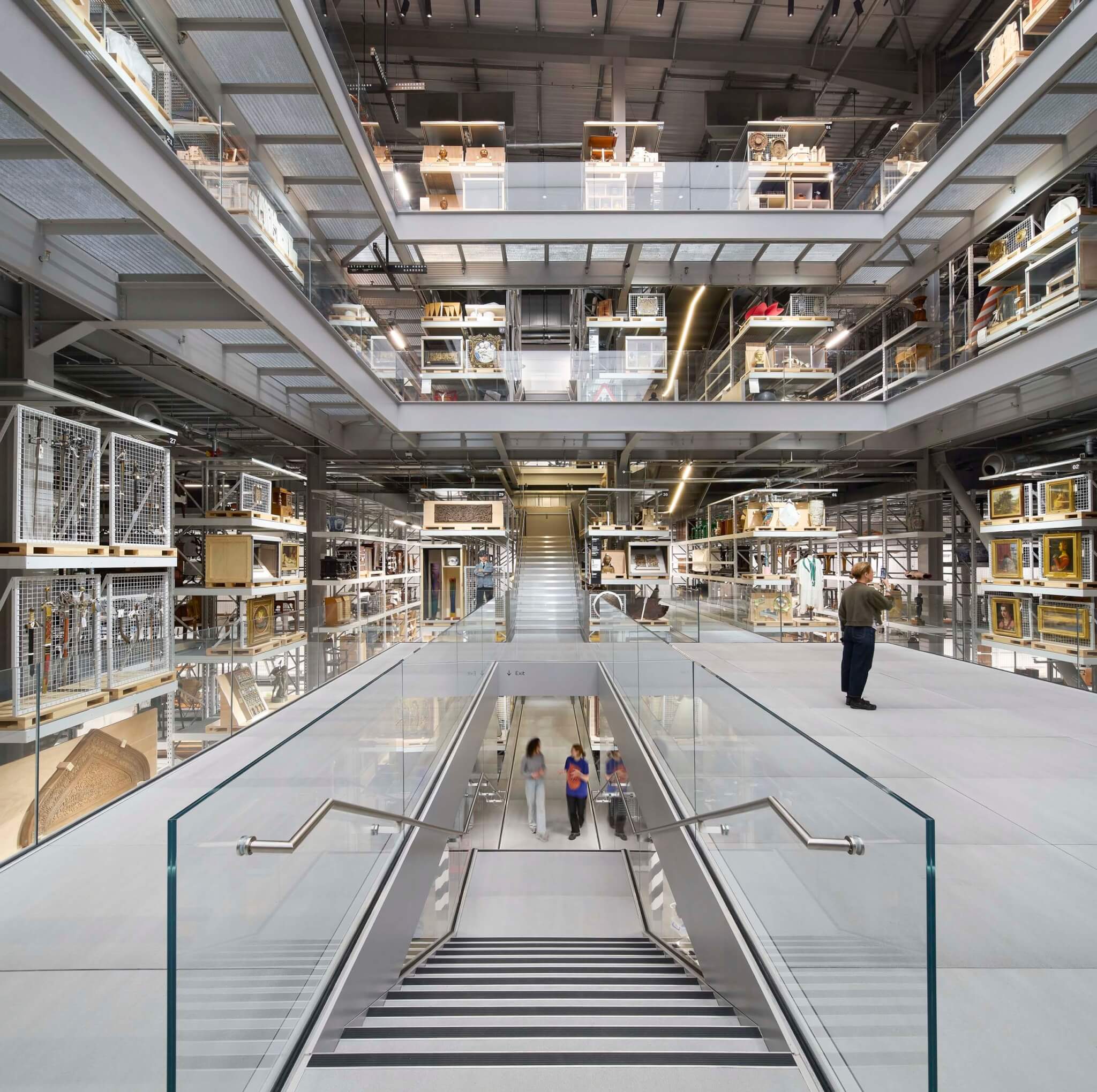
“The Storehouse defies the logics of conventional taxonomies,” said Diller. “Where else would you encounter suits of armor, stage cloth, biscuit tins, building fragments, puppets, thimbles, chandeliers, motorcycles in one place next to each other?”
These objects were previously hidden away in Blythe House, Olympia, alongside collections from the British Museum and the Science Museum—until the government announced plans to sell the Edwardian bank. This prompted a conversation about what its storage can and could be. The space spans approximately 172,000 square feet (16,000 square meters)—a fraction of the V&A’s over 850,000 square feet (80,000 square meters) at South Kensington—but it’s dense with meaning. It now houses 250,000 objects and has been designed with five years of growth in mind, with plenty of empty shelving still in view.
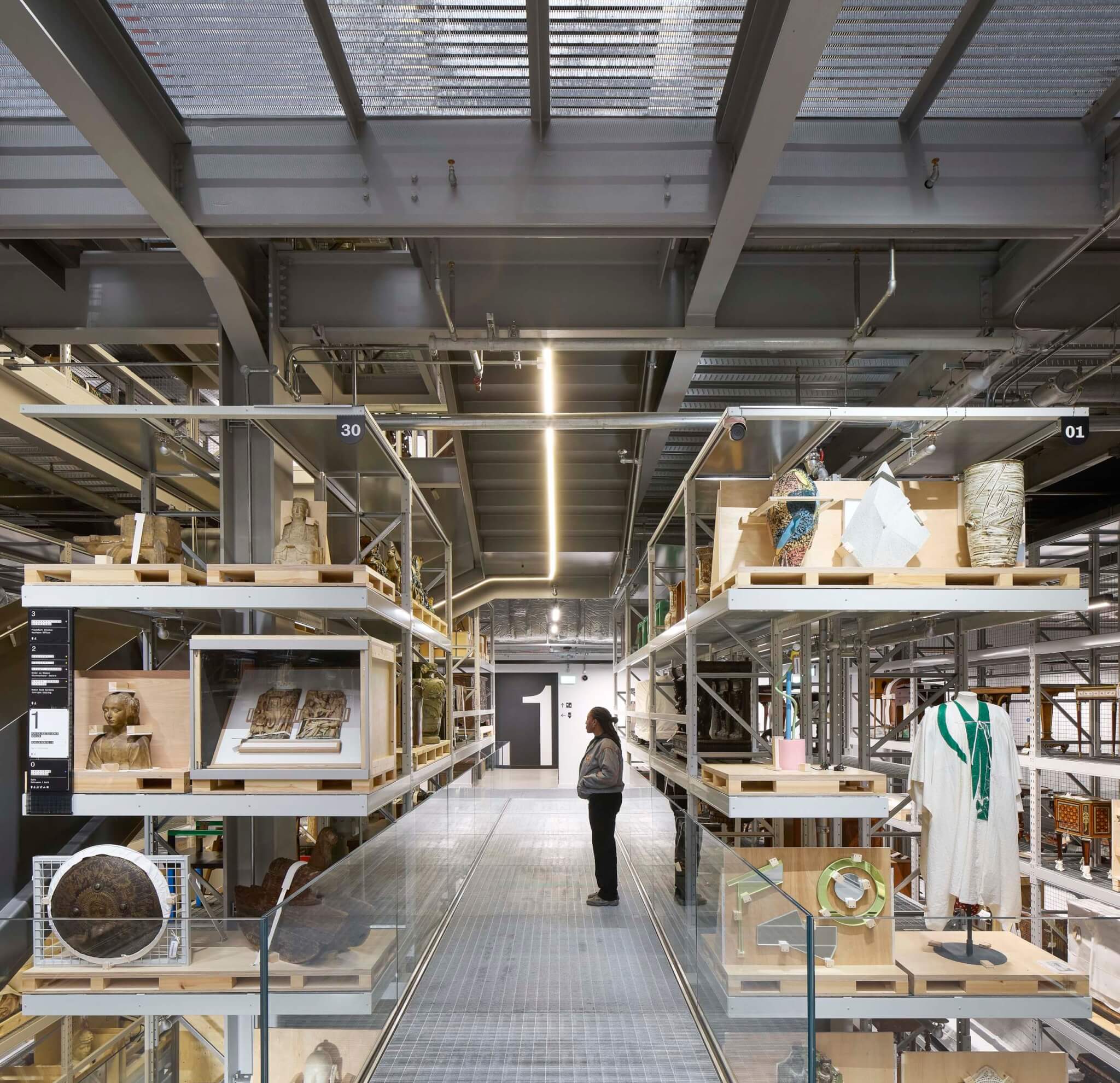
The object collocations feel accidental but profound. What is a Frankfurt Kitchen, with its strict Bauhaus order, doing just down the walkway from the ornate, gilded Torrijos ceiling from Toledo? Why does a safety curtain control panel share a shelf with a bamboo wind instrument? Everyday objects aren’t elevated so much as exposed—invited to speak on new terms, next to things they were never meant to meet. There are smaller, curated exhibits too—some behind glass—assembled using a modular “kit of parts” display system designed by IDK.
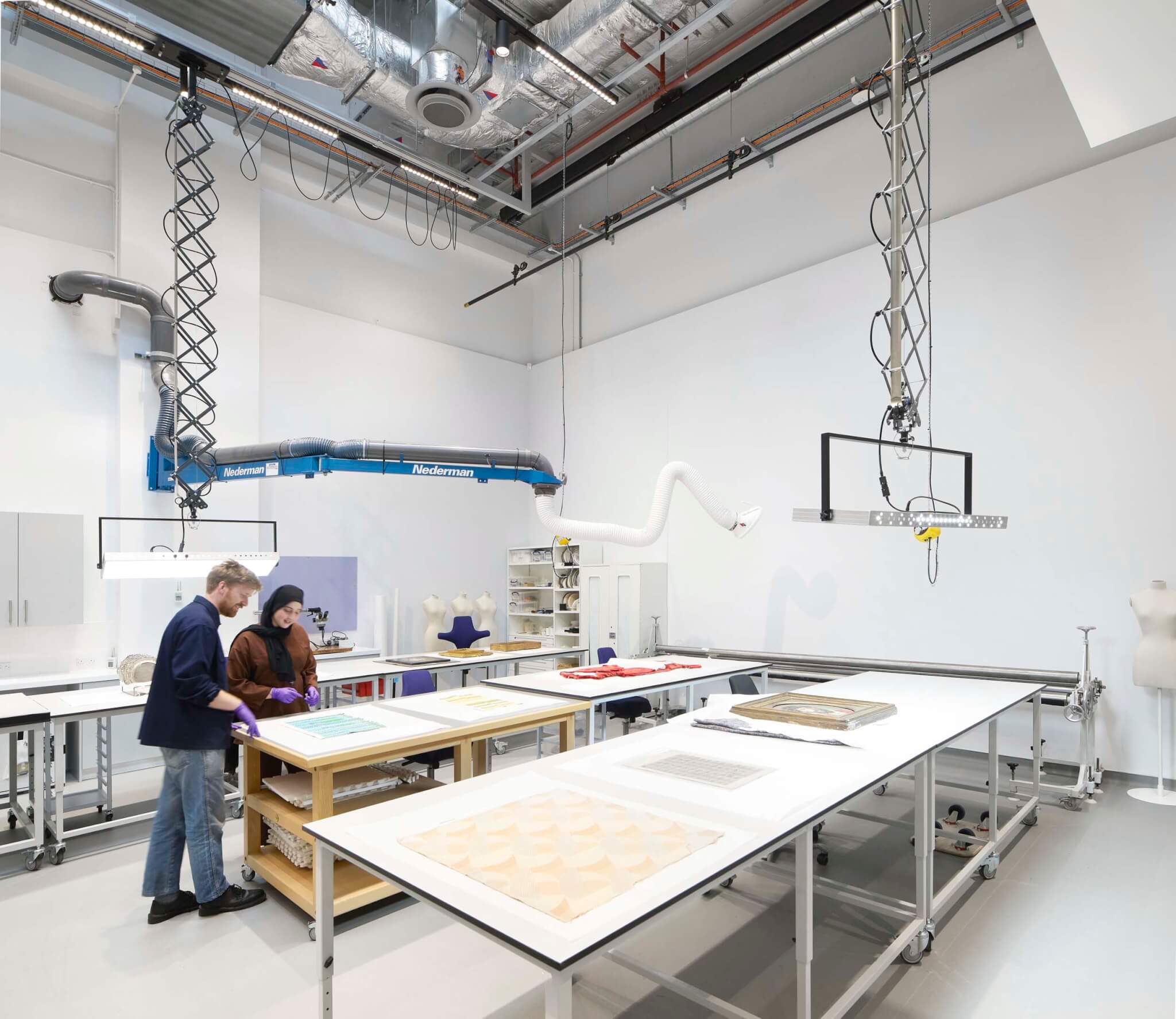
Anyone can request up to five objects from the collection and make an appointment to view them. If the objects are small enough, they’ll be brought to you at a table. If they’re big, you go to them in the darker parts of the museum. As Diller put it, the Storehouse is designed with “an inside-out logic,” where the center is public, the middle semi-private, and the outer edge reserved for conservation, research, and protected storage. There are moments where private and public parts interact, for instance in the “conservation overlooks,” where you can watch the conservators at work from public galleries. It quietly teaches that the arts are an industry too; there are opportunities besides being an artist.
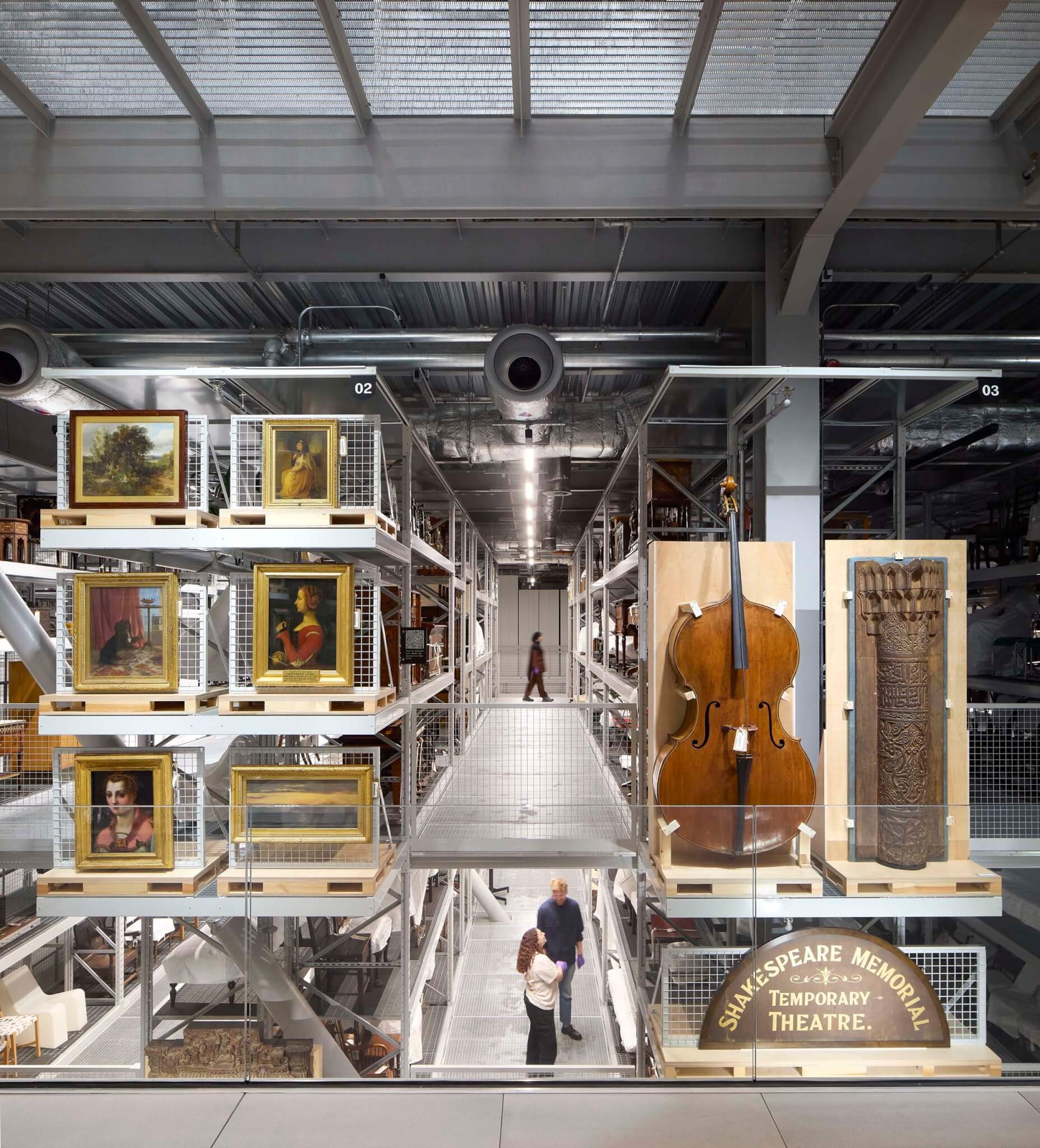
Some of what Storehouse allows you to see is uncomfortable. The colonial overtones are hard to miss. These are objects taken from across the world—beautiful, rare, complex—and now stored in a warehouse in East London. The Agra Colonnade, from a 17th-century Mughal building, is on the ground floor where visitors can walk on the glass floor above it, breathtaking and fraught. This is a first step—a way of airing our institutional laundry in public, and inviting interrogation, reinterpretation, and hopefully reckoning.
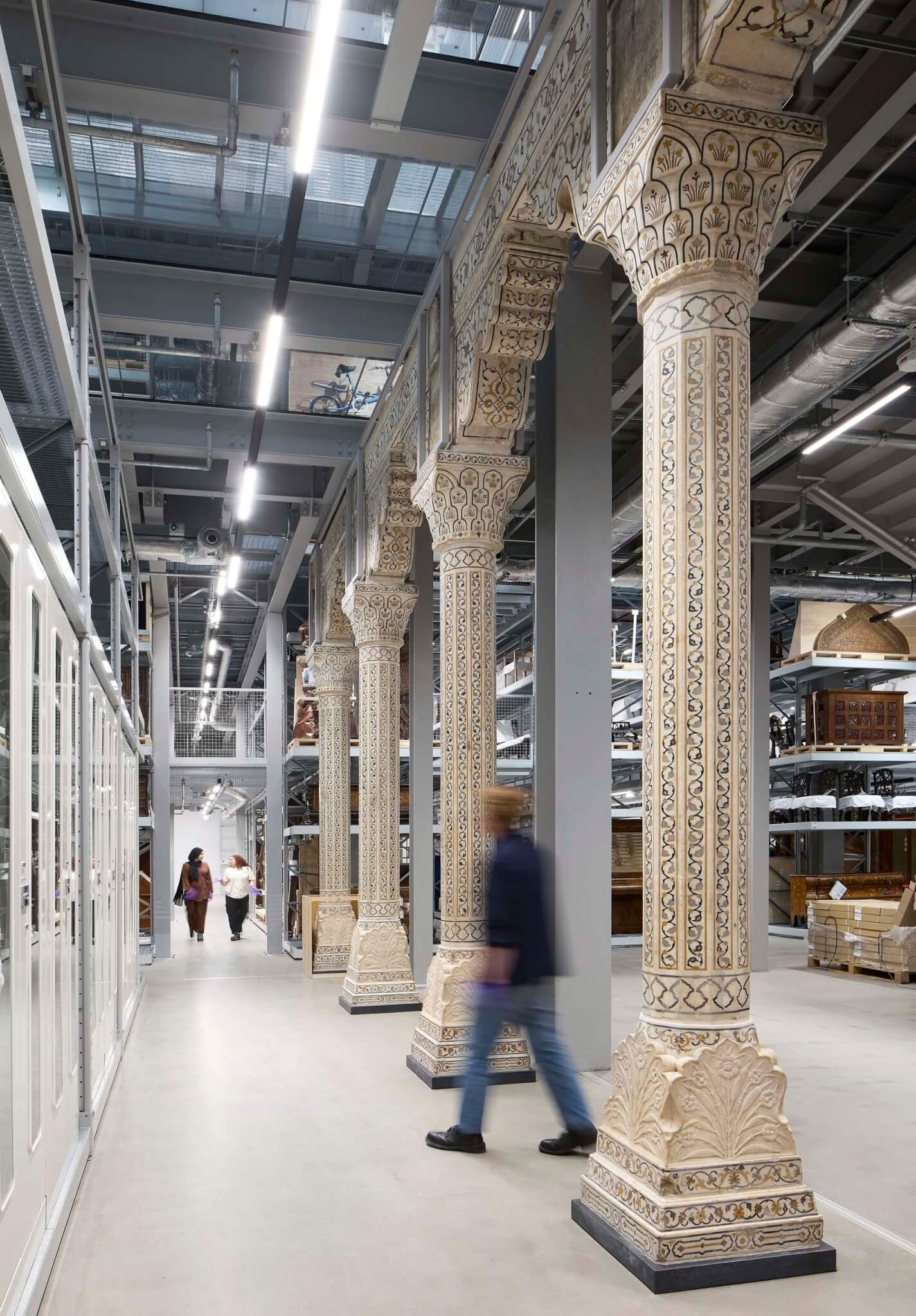
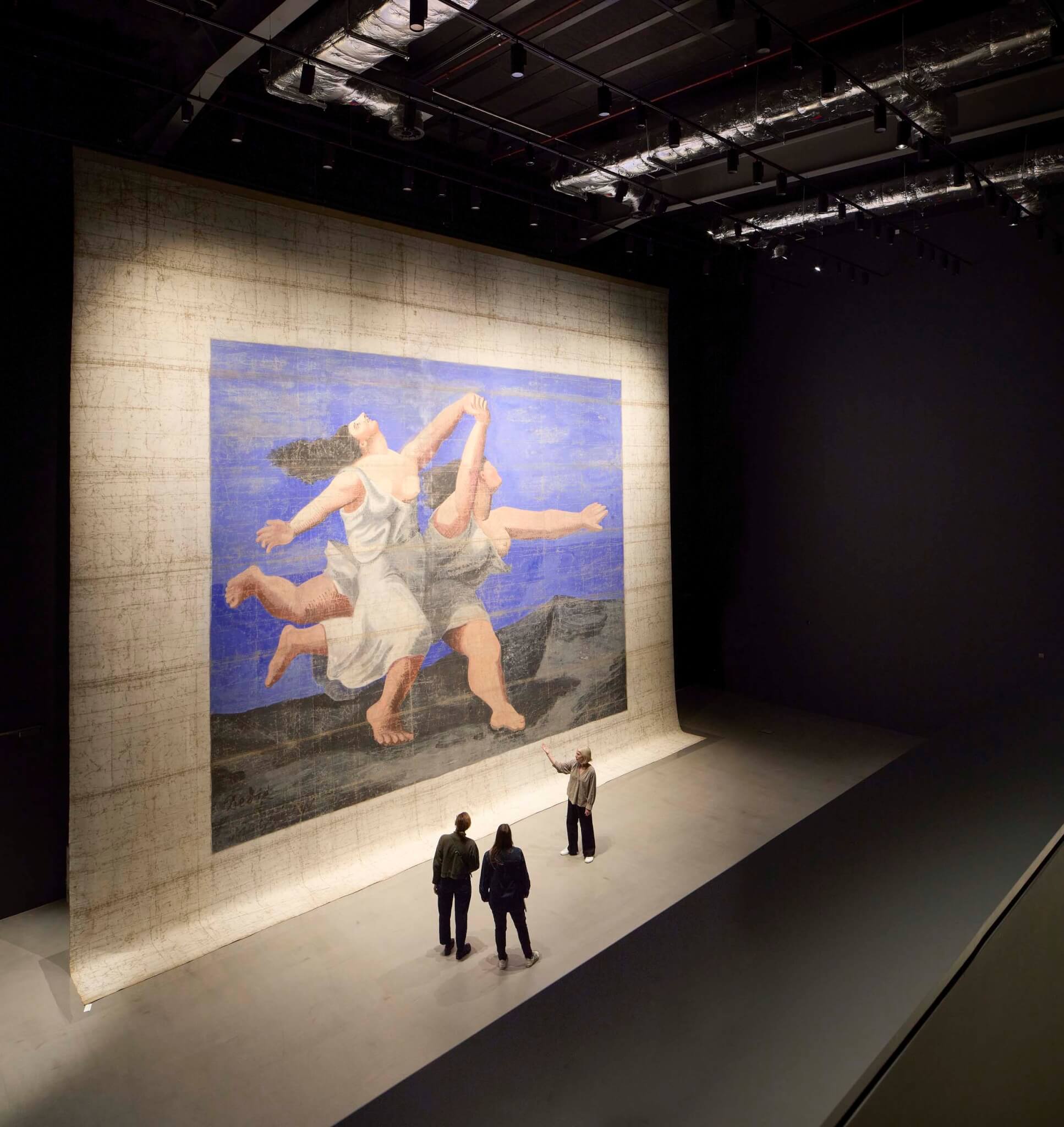
Mostly, there is a sense of happy chaos, but there are moments that stop you. Down a quiet corridor sits a towering black-box space, spanning two floors. Hanging inside is the 1924 Le Train bleu stage cloth for the Ballets Russes in 1922—a reproduction of Picasso’s Two Women Running Along the Beach. “This is the largest space,” said project architect David Allin. “It lets you see oversized objects from two levels and even watch the conservators at work.” This cloth will later be replaced by the one that the tall space was designed around: the larger Firebird—Natalia Goncharova’s 10-by-16-metre stage backdrop.
Here is where you can feel the V&A talking to itself across the city: South Kensington in its lofty register of imperially reaching cast courts, and the Storehouse answers with its mirror image. I catch my breath in front of Le Train bleu, first at its vastness, but then at the hulking crate parked behind it. The Storehouse is rewriting the story and showing us its workings.
Ellen Peirson is a London-based writer, editor, and designer.
→ Continue reading at The Architect's Newspaper
